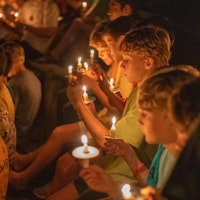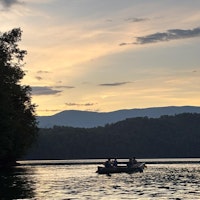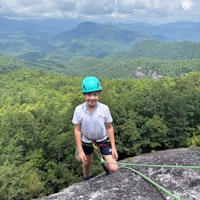
Answering Your Questions About Safety
How do we manage risk at camp?
As detailed below, we plan all year for the summer months to be as safe as possible so we can spend our time together simply having fun, where campers feel comfortable and safety measures are continually operating in the background.
We know that the decision to send your child to camp is not one that is made lightly, and you are welcome to contact us any time to talk parent to parent.

A Letter From the Directors
We have immense gratitude for the opportunity our team has to steward camp experiences that can positively impact the campers and staff in our care. The activities, programming, meals, and messages here at camp are both fun and intentional.
A great deal of planning goes into the activities that are offered and the systems that support them. It’s not just about the helmets at mountain biking, the eye protection at riflery, or the life jackets at the docks. At camp, we take care to manage risk in all the details, both seen and unseen.
You can read more about our planning, staff training, emergency response, and accreditations below. When boys are surrounded by an environment and community that has their best interests in mind, they are able to feel safe both physically and emotionally.
As parents ourselves, every decision we make for the Falling Creek community is made with the same care and thought process we use to raise our own daughters. Managing risk and caring for the health and safety of your boys during the summer is our priority and privilege.
-Marisa and Yates Pharr
Camp Directors/Owners
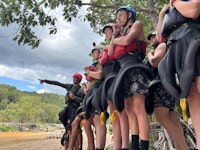
General Facts
- We are accredited by the American Camp Association (ACA). ACA is the only nationwide accrediting organization for year-round and summer camps. This is a voluntary third-party peer review process, with 350+ standards on program quality, health, safety, and risk management that camps must follow in order to maintain their accreditation.
- We are members of the North Carolina Youth Camps Association (NCYCA) and a member of the Camp Owners and Directors Association (CODA).
- We are inspected annually by the local health department and the fire marshal. We meet with members of our local fire department to ensure they’re familiar with our property.
- We have a health center on campus, led year-round by our head nurse, and staffed by a doctor and multiple nurses each week.
- The Green River runs through the lowest portion of land at the entrance to camp. We tube, paddle, and fly fish here, but there is no camper housing in this area. Our cabins and facilities sit in a natural bowl about ¾ mile (roughly 600 feet of elevation) up our mountain. Both road access points are gated.
- All waterfront and paddling staff are Red Cross certified lifeguards. Everyone wears lifejackets during free swim and boating activities. We assess each camper’s swimming skills with a Swim Skill Classification, which determines their level as a Green or Gold Swimmer. “Green Swimmers” are required to take swimming instruction as one of their six daily activities and are not eligible for out-of-camp sailing, paddling, and other water-related trips, until they become “Gold Swimmers.”
- All outdoor adventure trip leaders are Wilderness First Responders
- Every activity location, Camp Director, and Line Head has a radio. There is also a radio in the Program Office Welcome Room, which is unlocked at all times.
Parents’ Perspective
We know you want what’s best for your son. So why do other parents choose Falling Creek for their boys?
Hear From Parents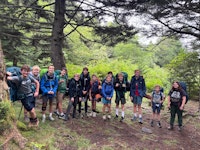
Camper Management Software
We use a proprietary data management system to keep camper information organized on a daily basis. This system, which we’ve nicknamed “Chuck Norris,” tracks camper attendance within daily activities, as well as on trips out of camp.
Attendance is taken at the start of each of our 6 daily activities to ensure that every boy is accounted for, and those who have signed up for trips have their status and location automatically updated. This system also tracks all allergies, daily medication, activity progressions, and medical logs so Camp Directors and medical staff can access important information for each camper and staff in real time.
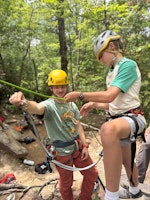
Emergency Action Plan (EAP)
We are diligent in our planning and practice of procedures for emergency response, hoping they are never needed. Our comprehensive Emergency Action Plan (EAP) covers many different unforeseen events, including those designated by the American Camp Association as situations we need to prepare for as part of our accreditation. Counselors and staff are trained on our Emergency Action Plans during staff orientation and training. Unexpected practice drills are part of the training. Disasters include natural disasters, fire, storms, missing campers, and intruders on property.
Our plans encompass utilization of electronic and non-electronic methods for gathering campers quickly, taking attendance, and providing direction for mass movement of people. We have ingress and egress points at camp to move people on (emergency personnel) and off the mountain quickly if needed. We also have generators on property that operate our offices and Dining Hall.
Our Perry Weather on-site weather monitoring and alerting system not only signals lightning in our area, but its signaling and broadcast capabilities are also used to give advance notice of extreme or changing weather information. The siren notification reaches all cabin areas of camp and notifications are pushed to Directors on their phones. Campers are oriented about the signals and how they are used during orientation on the first day of each camp session.
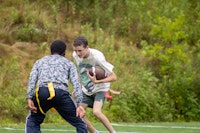
Staff Training
All-staff-orientation is a training program in which all our cabin counselors, activity instructors, and kitchen staff participate. During this time, all staff are trained by camp directors, outside youth development professionals, and medical certification instructors.
During all-staff-orientation we cover topics including camp health and safety, risk management, conflict resolution, and communication skills during this staff training time. Prior to arriving on camp property, we perform criminal and sexual abuse background checks on all staff. Everyone is required to complete professionally developed online courses through Expert Online Training, with the wellbeing of our campers and the rest of the camp community at the top of our mind, so there is no misunderstanding about what kinds of actions are acceptable when working with youth or working at camp.
Leadership staff, lifeguards, outdoor adventure trip staff, and those instructing specialized activities arrive 7-10 days earlier for additional training.
Counselors take a 3-day course to become Wilderness First Aid certified, and outdoor adventure trip staff become Wilderness First Responders after an intensive 9-day course.

Weather
- Our Perry Weather on-site weather monitoring system alerts if lightning or extreme weather is detected.
- The siren notification reaches all cabin areas of camp and notifications are pushed to Directors on their phones.
- Campers are oriented about the signals and how they are used during orientation on the first day of each camp session.
- Contact with all adventure trips off-property is maintained via cell phone or satellite phone as needed. Groups on trips are always accessible for pickup should it be deemed necessary to get them.
Security
- Both entrances to camp are gated
- Through Perry Weather, we have an intercom speaker system that reaches all cabin areas of camp and can be heard throughout property for alerts or instructions.
- Other security strategies and protocols cannot be shared online for obvious reasons, but you can trust that these measures are in place
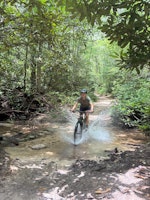
Medication and Health
- We have a health center on campus, led year-round by our head nurse, and staffed by a doctor and multiple nurses each week.
- If your camper should need medical attention for any reason while at camp, our medical team is available to care for him. Advanced emergency care and consultation are available at local physicians’ offices and area hospitals. A camp nurse, physician, or director will communicate with parents by phone in the unlikely event of significant illness or injury.
- Parents will be notified if their son spends the night in the Infirmary, visits an out-of-camp doctor/dentist, or is prescribed medication due to illness or injury.
- We use unit-dose packaging to organize and administer medication at camp. Full details can be found on the Medication page in the Parents section of our website.
- Except for second inhalers for asthma, second epi-pens, and prescription dermatological creams, campers of any age are not allowed to keep medication in their cabin, including pain relievers, vitamins, and other over-the-counter medications.
- For more details on our Allergen Policy, please see the Health page in the Parents section of our website.

Emotional health
- With over 140 staff and 312 campers per session, there is a better than 1:3 ratio of staff to campers, ensuring that your son will always have someone he can talk to.
- We intentionally limit the number of boys in the Junior Camp session so there is an even higher staff to camper ratio for our youngest, first time campers.
- Under the Dining Hall, there is a locked “Dear Yates and Marisa Box”, where anyone can write their concerns or questions for Yates and Marisa to see privately and follow up.
- There are ample opportunities at camp to grow spiritually, and the directors and counselors at camp are always available to support boys in their relationship with God.
- We have weekly church service on Sunday, as well as daily “Morning Spark” before the wakeup bell. Morning Spark is an optional Bible study where staff and campers gather at the Goody Shack on the landsports field each weekday morning to read and talk about who God is and how the Bible relates to us.
- Cabin counselors check in with each boy individually weekly, to make sure they are on track with their personal goals, enjoying camp, and to help set them up for success.
- We have regular camper surveys throughout the summer, so we can monitor campers’ feedback and suggestions, continuing to strive for the best possible camp experience. During these surveys, every individual receives a survey form, and the responses are analyzed that week to look for trends and areas that we can act on.
